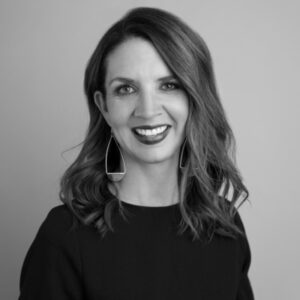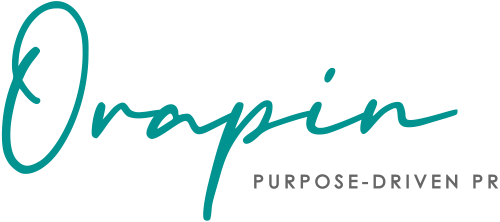 Public relations continues to be an ambiguous concept. The reality is PR is more than just press releases and media outreach. As a result of the industry’s growing complexity and layers of PR that have entered the communication landscape over the past 10 years, it’s not uncommon for us to spend a good portion of our energy educating our clients not only about the “why” of PR but also “what” it is in the first place.
Public relations continues to be an ambiguous concept. The reality is PR is more than just press releases and media outreach. As a result of the industry’s growing complexity and layers of PR that have entered the communication landscape over the past 10 years, it’s not uncommon for us to spend a good portion of our energy educating our clients not only about the “why” of PR but also “what” it is in the first place.
Today, PR consists of four components, defined by Gini Dietrich: Paid media, Earned media, Shared media and Owned media.
PAID MEDIA
It’s defined exactly as it sounds: Content that is paid for. This may be a sponsored article or blog post your company paid to place in a magazine, a Facebook or Twitter advertisement, or an ad in a local newspaper or radio station.
The pros? Usually when working with the advertising representative at a news outlet, they can provide very specific metrics showing total impressions, reach and engagement levels in reporting. They work closely with you to define ad goals and often have in-house creative departments to help craft an “ad” that embodies your brand, mission and the story you want to tell. Social media promoted posts also provide you with valuable data so you can assess ROI. Finally, paid media allows your organization or company the ability to hyper target your messages to specific audience groups. Rather than a “spray and pray” mentality, messages can be crafted to reach the specific people you want to tell your story to—and that goes a long way.
EARNED MEDIA
This is the standard publicity component where PR got it’s reputation. This is unpaid coverage of your company or organization cultivated from strong relationships with reporters, editors, bloggers and community influencers. In today’s information saturated world where reporters and news outlets are strapped for resources (i.e. minimal staffing), earned media efforts are a growing challenge for all PR professionals and require massive creativity. The goal of earned media is layered: craft a story that speaks to cultural shifts and changes in the community (timeliness and significance), resonate with the reporter who covers specific topics (relevancy) and, most importantly, is of interest to the publication’s readership (interesting).
The pros? Earned media placements establish credibility and “newsworthiness” to your brand. When others read a story featuring your organization’s expertise, it is coming from a third-party endorsement, which generates trust and authority among readers. It’s not a “pay to play” story like paid media. Rather, is an earned story that comes from a trusted news source saying “this company/organization is worthy of your attention.”
SHARED MEDIA
This is content shared on social media including Twitter, Facebook, LinkedIn and Instagram (to name a few). Comments, likes, group forums, shares and retweets all contribute to the conversation. Another layer to shared media includes community partnerships, charity tie-ins and co-branding with like-minded organizations/companies.
The pros? Shared media is all about engaging in the conversation; allowing your company to establish a share of voice in the local issues and topics that people care about. Engaging in these “social” conversations and interactions often inspire earned media stories and overall marketing campaigns. Tapping into shared media strategies allows your organization to “hear” firsthand the issues that are important to your target audience and subsequently, think about ways in which to provide thought leadership content pertinent to their conversations. It can be a win-win for a lot of companies looking to share their expertise with the world and is extremely valuable from a brand awareness perspective.
OWNED MEDIA
This is content that originates directly from your organization: blog posts, customer testimonials, employee stories, reviews, your website, videos and podcasts. It is literally, content and assets that your company has developed and owns. Much of owned media content can inform or inspire earned, paid and shared media content.
The pros? Having a regular content development strategy in place so your organization is sharing valuable and interesting information for your audience to engage with is key to building credibility, showcasing expertise and working with paid and earned media contacts to share your stories with those that matter most. We consider it one of the best and most effective foundations for any communication campaign or strategy. If your organization can “fill its library” with original content that speaks to your audience’s concerns and addresses their problems, you’ll see how it can foster relationships through the customer buying lifecycle (awareness of your brand, consideration of your product/service, conversion [purchase] and advocacy [loyalty].
The takeaway?
Not one of these strategies alone will help elevate your brand and story for long-term growth. It requires a creative mix of paid, earned, shared and owned media content to successfully reach audiences on their terms, where they are. Just as one TV commercial doesn’t inspire you to go out immediately and buy, no one piece of content will directly influence an action. It is a frequent combination of stories, messages and memorable calls to action that, together, can inspire your audience to do what you want (make a call, donate, attend an event, become a volunteer).
Our next blog will dive deeper, showing you how to create and leverage content for each of these specific media strategies.

Rhiannon Hendrickson is the founder and CEO of Orapin, which helps purpose-driven organizations transform their random acts of PR into a strategic, consistent approach that generates greater awareness and impact. She has worked with organizations of all sizes across myriad industries and causes to develop earned media and thought leadership programs that generate awareness, engagement, and, ultimately, support for those that are making a meaningful impact.
